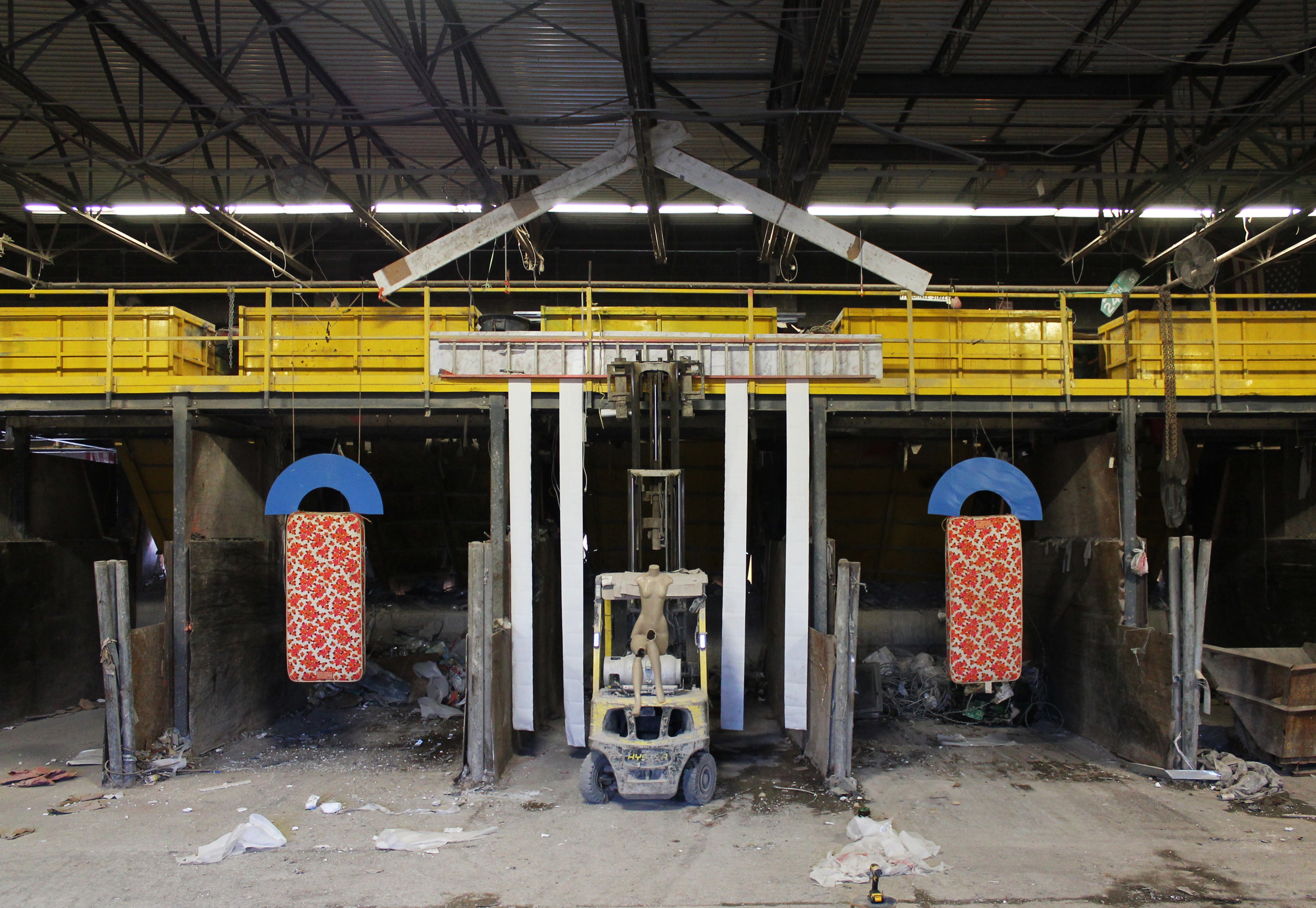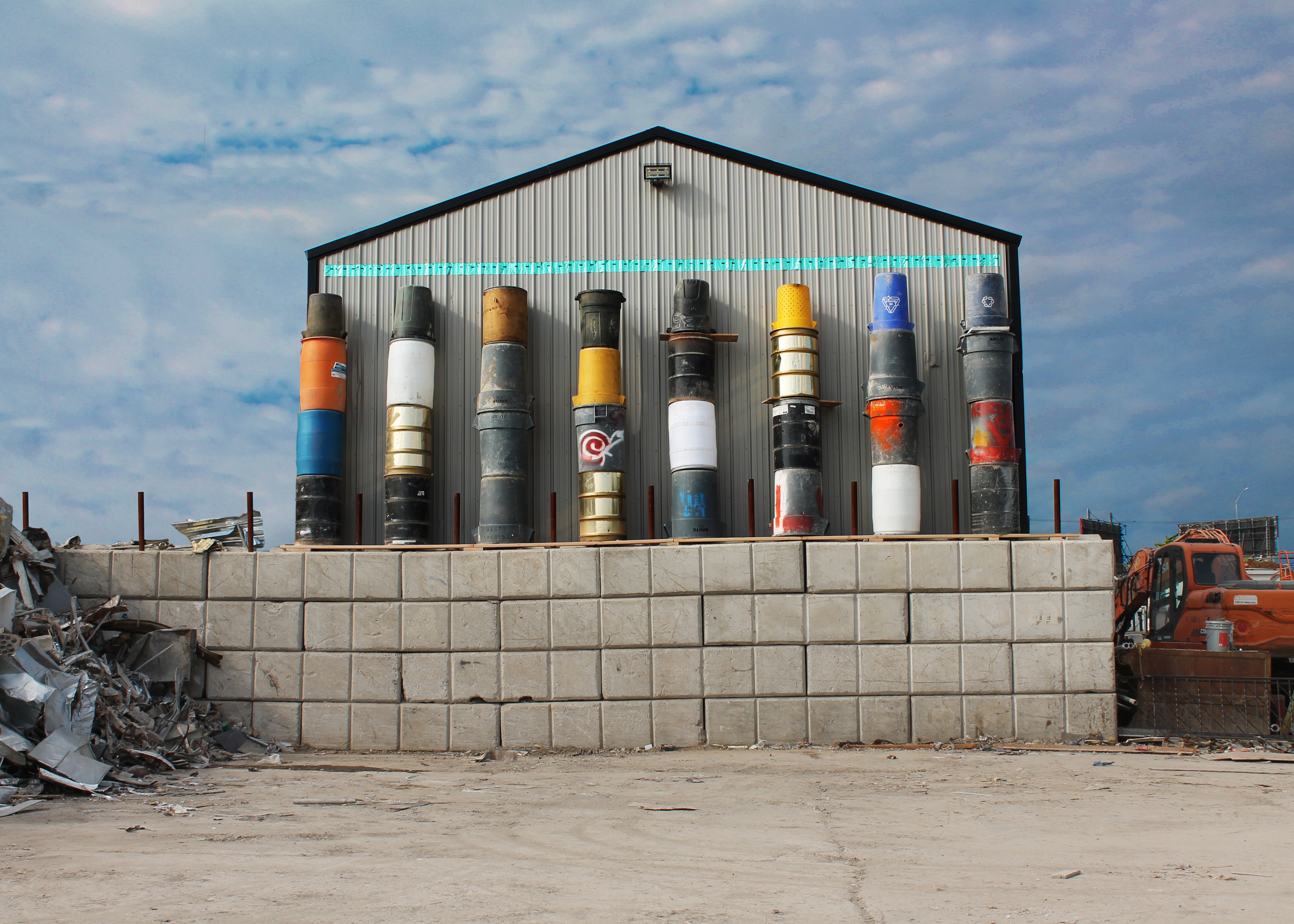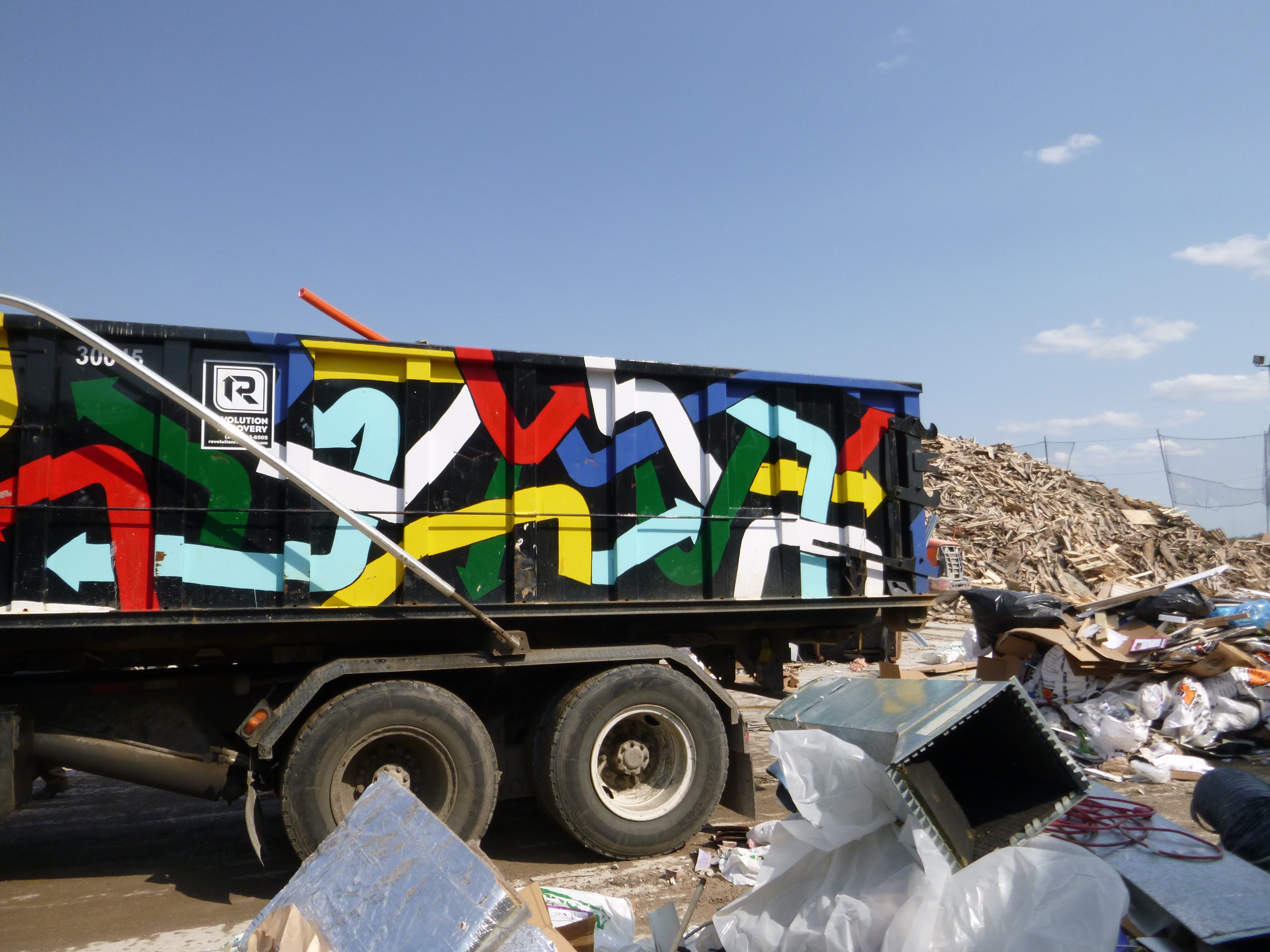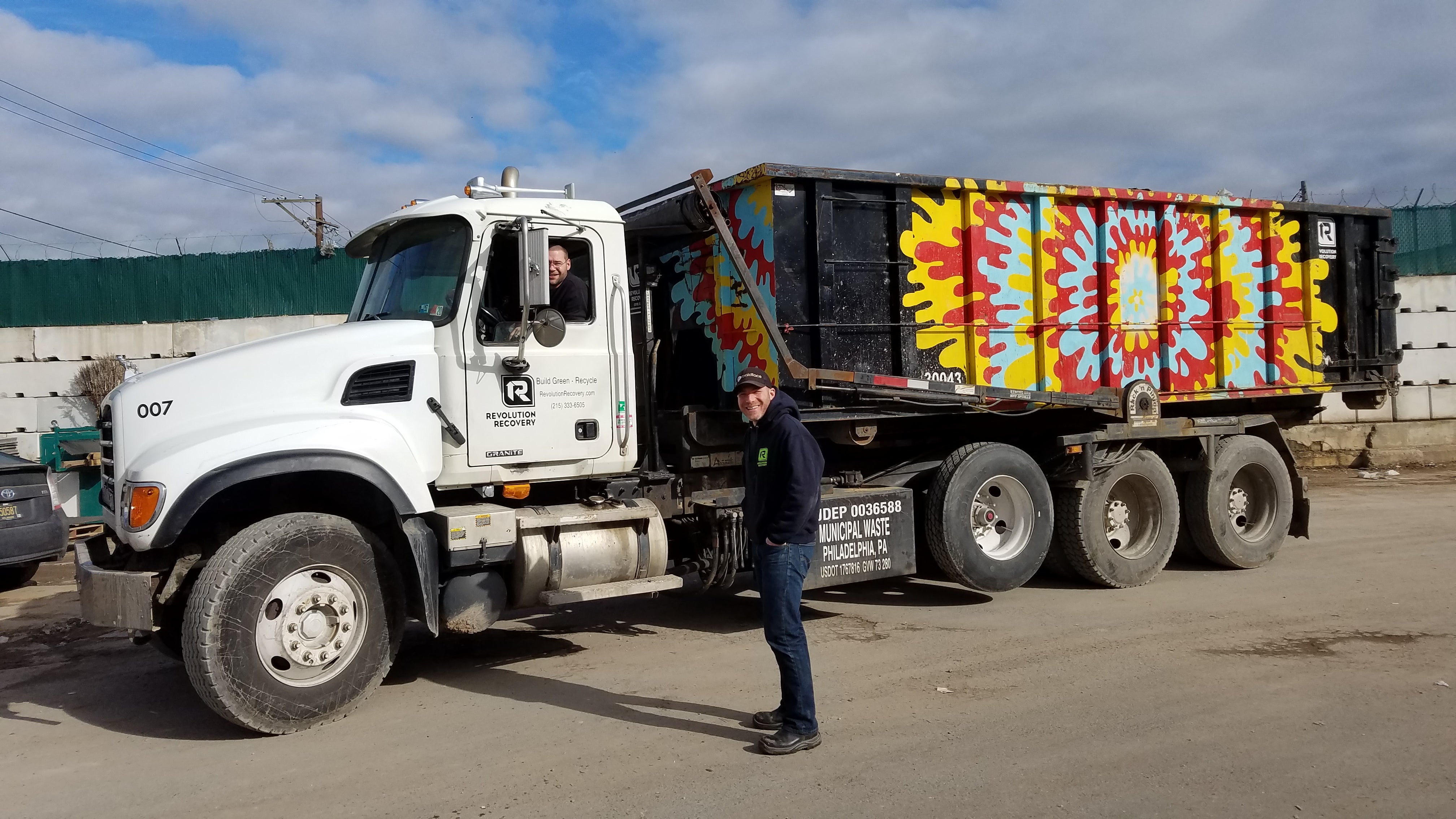Filthy Rich: Finding art and utility in the waste stream
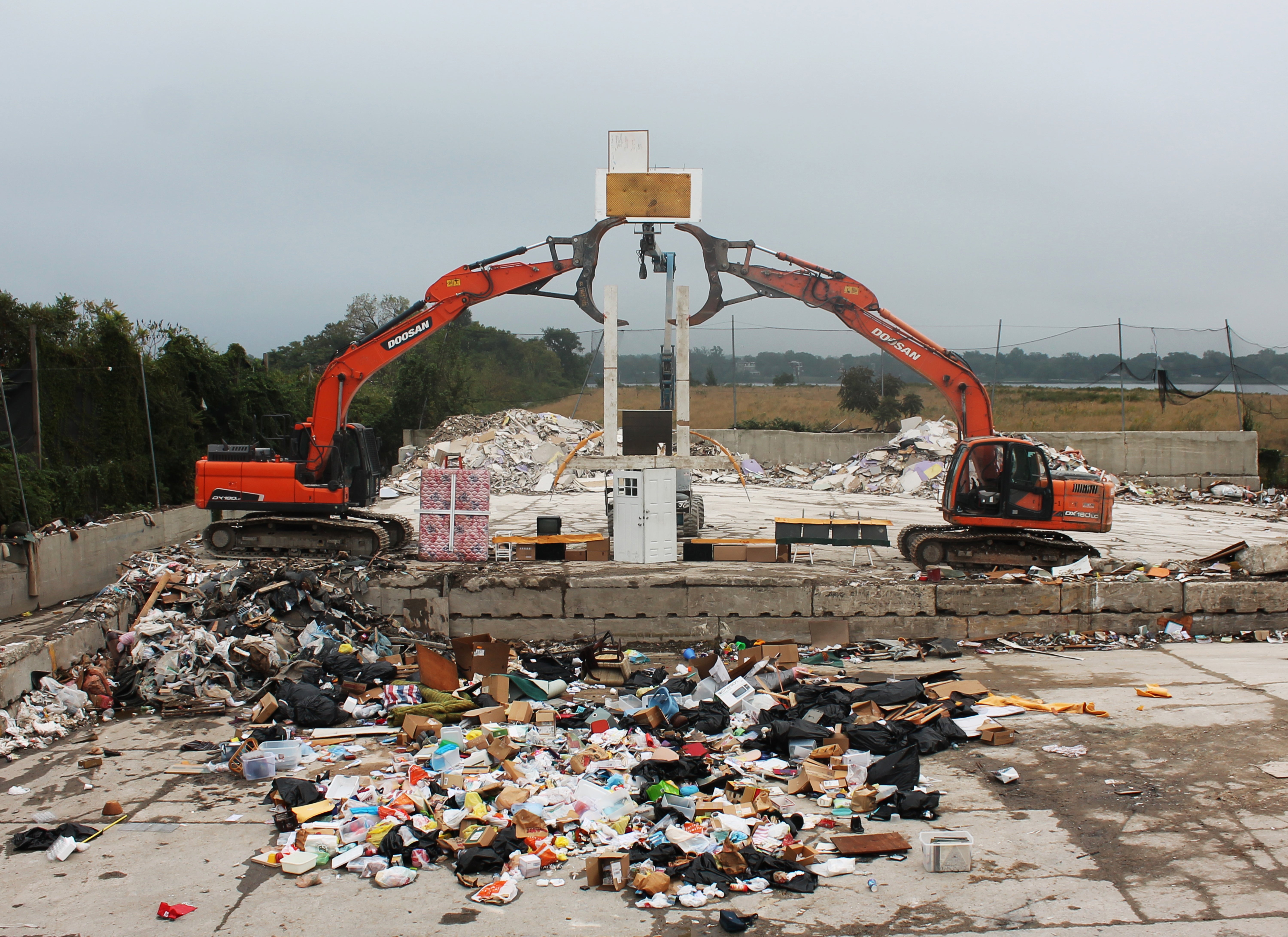
Cheery mural-painted dumpsters, trash-themed movie nights, and excavators dressed up as reindeer for the holidays aren’t normally found at an industrial waste management facility. But that’s all typical for Revolution Recovery, a company that’s entering its 13th year in Philadelphia’s waste recycling industry.
Revolution Recovery aims to keep as much construction job site materials—like wood, metals, drywall, rubble and even carpet—out of landfills as possible. In 2004, Avi Golen and Jon Wybar started Revolution Recovery as a two-man team hand-sorting truckloads of construction and demolition (C&D) waste, an often overlooked segment of the waste stream. The vast majority of these materials can be recycled or reused, and while recycling has obvious environmental benefits, Golen and Wybar knew they weren’t going to win over customers solely on that basis.
“To even get in the door with contractors, we needed to offer better customer service, at equal or lesser price, and bring the environmental piece. A lot of our customers don’t even know we’re recycling. If you’re the General Contractor on site, what happens to waste after it leaves your site is an afterthought. The much larger piece of our business is what happens when we get the material back to our facility,” Golen said.
Revolution Recovery now employs more than 80 people in trucking/hauling, sorting, and administrative departments. In 2016, it received and processed 150,000 tons of material at two facilities in Tacony and New Castle, Delaware, recycling over 80% of it. In 2017, they’re looking to expand.
Beyond a growing recycling business, Revolution also encourages creative reuse at its yards. It’s one of only two facilities in the country (the other is in San Francisco) that invites artists in, offering access to materials and studio space. The artists participate through Recycled Artists in Residency (RAIR), a non-profit program headquartered at the Tacony site, led by sculptors Billy Dufala and Lucia Thomé, with support from co-founder Fern Gookin, who does double duty as the company’s director of sustainability. Participating artists receive safety training, then don hard hats and high-visibility vests to navigate the yard alongside trucks and heavy machinery. The yard is a mine of raw materials for sculpture, installation, photography, and endless creative possibility.*
The idea of trash heap as treasure trove is implied in the title of a new survey exhibition called RAIR: Filthy Rich – Projects made possible by the waste stream, on view in the Galleries at Moore College of Art from January 27-March 11th. The exhibition is an introduction to RAIR, showing a range of creative responses artists have had when embedded in the industrial setting. RAIR hosts around seven residencies each year with artists from all over the country. Many residents have commented on how their experience on site in the yard–watching 250 tons pass through each day–has radically changed their perceptions of human relationships to materials, and how those materials are de/valued over time.
RAIR joins a long history of artists being inspired by trash, including Robert Rauschenberg, (a Modernist who routinely picked up street trash and used it in his ‘Combines’ series), Mierle Laderman Ukeles (groundbreaking artist-in-residence of NYC’s Department of Sanitation) and Vik Muniz (whose landfill workers-inspired social artwork is the subject of a documentary called Wasteland). Many of the works created by residents have been site-specific and few have been seen in person, given the limited opportunities for the public to visit the recycling facility en masse. As a result, much of Filthy Rich is in the form of photographic and video documentation. There is also a special section highlighting works by 2016 resident Ana Peñalba. Peñalba, an architect by training, used the detritus from the city’s latest building projects to reconstruct iconic Philadelphia building facades.
In addition to residencies, RAIR also works with many more local artists, schools and community organizations on special projects that involve designing and building things like park tables and benches, signage, shelving, and theater sets–all using materials taken the trash. RAIR has no shortage of materials to work with thanks to the sustained growth and success of Revolution Recovery, buoyed by Philadelphia’s recent building boom.
Of the 2.5 million tons of waste Philadelphians generated in 2014, about 400,000 tons (or 16%) came from construction and demolition activities. Total construction and demolition waste in Philadelphia quadrupled from 2009 to 2014. Based on reports submitted to the Streets Department, only 25,000 tons of C&D waste went to landfill in 2014. That’s an impressively high recycling rate for C&D waste, all the more so considering that there isn’t a legal requirement in the Philadelphia Code to recycle C&D waste. It happens not because of code but market forces, and companies that are able to make recycling cost-competitive. In its recently published policy framework, the Delaware Valley Green Building Council advocates for the City to adopt an ordinance that requires a minimum diversion percentage of the weight of C&D debris generated by all construction and demo projects.
As LEED certification has grown increasingly popular and the construction industry as a whole has adopted more sustainable practices, and businesses like Revolution Recovery are constantly working to find the highest and best uses for C&D waste material. One of the major ways recyclers stay competitive—keeping hauling/inbound prices lower than traditional landfill “tipping fees” despite higher labor and equipment costs—is because they make money on the outbound market too, selling the materials after they’ve been sorted and processed. The outbound market is directly affected by prices on global commodities markets.
When they started out, Golen and Wybar were told by industry veterans that what they were trying to do wasn’t a viable business because sending C&D waste to landfill would always be cheaper. In order for recycling to be viable, there needs to be a market of buyers offering decent prices for the materials that are being salvaged. Golen recounted, “For the first ten years we were in business the commodities markets were generally very high. Foreign markets like China, India and Turkey were constantly on the buy. We saw a fall off [in commodities prices] in 2014 when the US dollar gained strength and China’s economy slowed. 2014 was the first time in our company’s history where the recycling model just wasn’t paying compared to a landfill.”
Golen and Wybar kept their business growing through economic recession and dramatic market swings by constantly looking for ways to innovate. For example, they recently began producing a refuse-derived alternative fuel product made from processed wood chips that works to fire a certain kind of boiler. Revolution Recovery focuses on keeping operations as lean and efficient as possible, which makes it especially intriguing that they keep a space for artists.
That relationship began long before RAIR was established, when Billy Dufala was studying Sculpture at the Pennsylvania Academy of Fine Arts. He spent years reaching out to many different recyclers before he found Avi Golen, the only one who granted him access. While Golen insists that RAIR doesn’t affect the company’s bottom line, he is certain that the artistic presence adds an intangible value to the company’s culture.
“RAIR is very much a part of the fabric of Revolution Recovery. We’re in a rough and tumble business that can be highly competitive, very stressful and fast-paced. Having artists and artwork around really adds a different part to our culture,” Golen said.
Playful artistic gestures like the mural-painted dumpsters and the company’s holiday greeting card (now a very popular annual tradition) get people excited about recycling and sustainability, conveying what numbers and words alone aren’t able to. Making trash into an artistic medium in ways that are engaging and joyful, RAIR helps people to see creative potential in everyday waste.
While RAIR is a guest in Revolution Recovery’s house, the art program is very much poised to grow along with the business. Last fall, Golen and Wybar purchased a 14-acre Superfund site adjacent to their facility called the Metal Bank that quadruples its space in Tacony. Walking along the bucolic Metal Bank field that extends to the edge of the Delaware River, Avi Golen mentioned the company is navigating a complex process of applying for permits to expand onto the site. Part of the expansion plan is for RAIR to have a larger permanent home, including space for a future sculpture garden that would be accessible to the public. The symbiotic relationship between Revolution Recovery and RAIR offers an imaginative example of how artists embedded in a for-profit industry can result in a genuine reciprocity.
* NOTE: Nancy Chen worked with Recycled Artists in Residency as a pro bono Program Consultant in Summer 2016.
WHYY is your source for fact-based, in-depth journalism and information. As a nonprofit organization, we rely on financial support from readers like you. Please give today.





